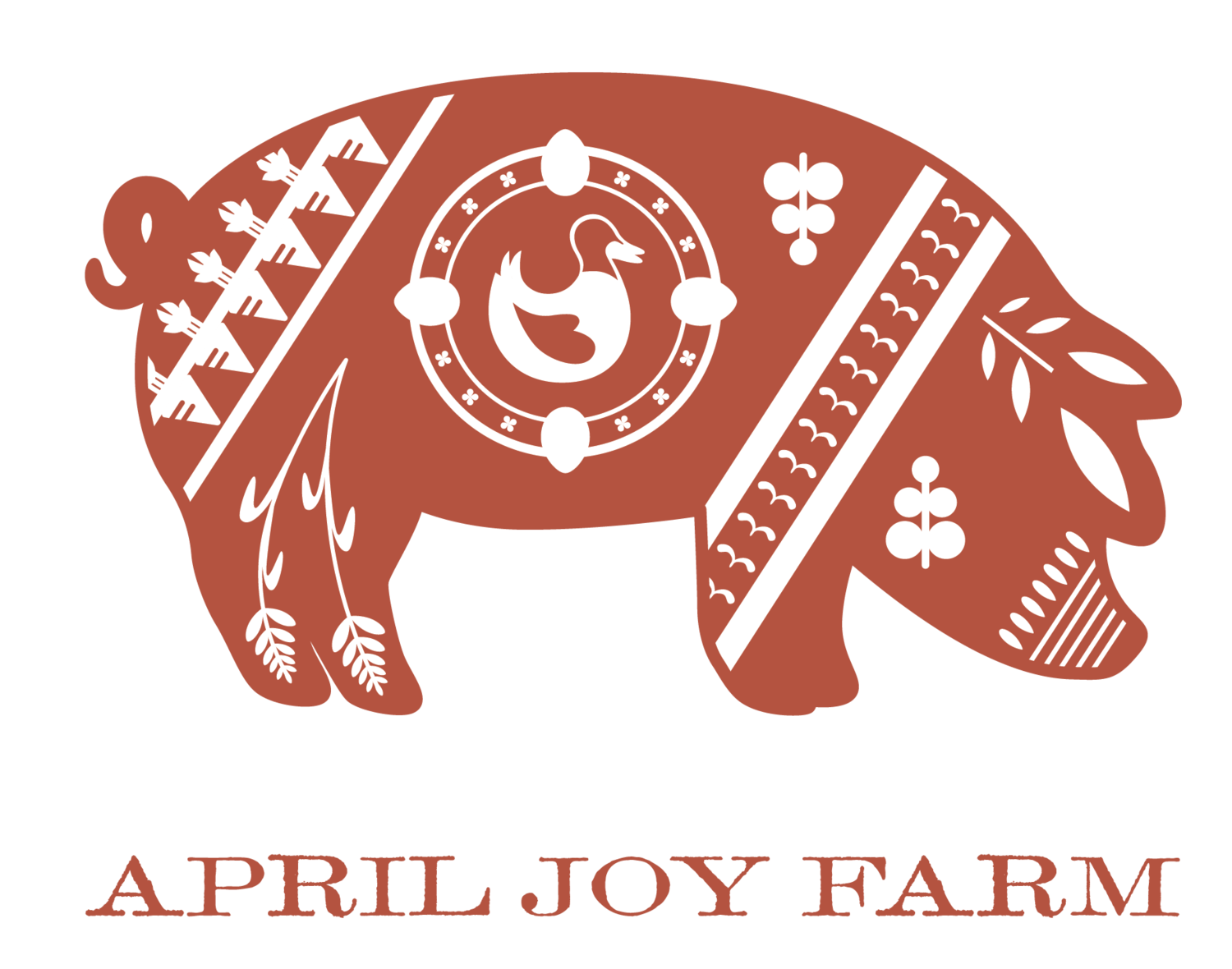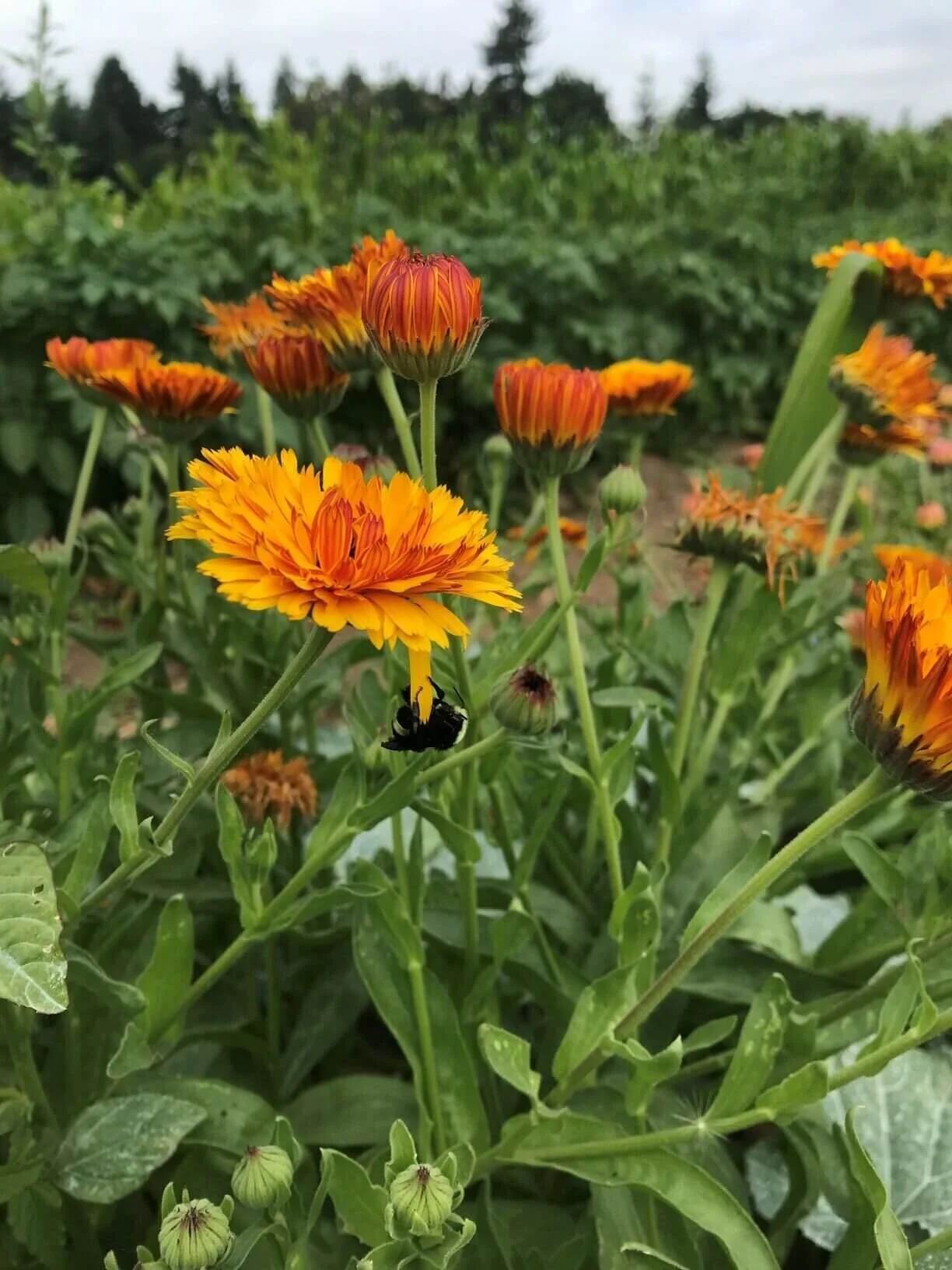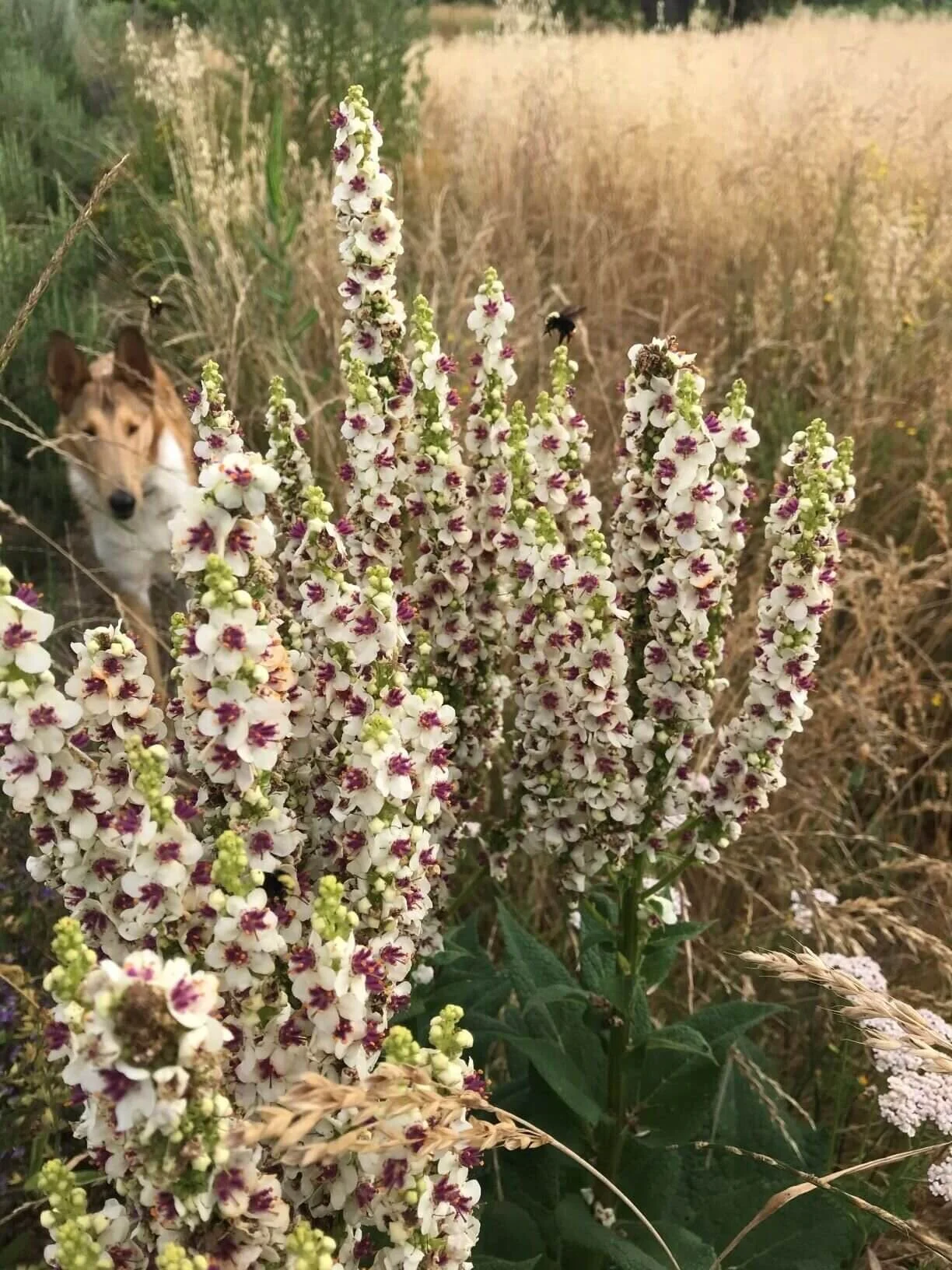Nourishing Bites | Seed (Un)Rest Part II
Just Hanging Out | A bumblebee rests on the petal of Calendula blooming in our cucumber patch. She seemed quite content. Does this mean we are headed into the ‘lazy’ days of summer?
Part I | Part II
I am grateful to be writing this note on a very peaceful, mild morning. This weather has been a supreme gift to help plants and farmers alike get our bearings and regain a sense of stability. It’s also been paradise in terms of catching up with field work. Hooray! We are proud and pleased to report that we have a full line up of produce this week. Again and again, I am grateful for the resilience of our fields. This latest heat wave and the ability of our plants to not only survive but keep on growing can be traced in part back to a very tiny beginning- it all starts with seeds.
You may not have thought much about seeds, but let me tell you, light as they are, seeds weigh heavily on my mind. And all seeds are definitely not the same, regardless of the fact they may carry the same varietal name. You can’t judge a book by its cover, and you can’t judge a seed by its shell. Just like humans, the experiences we’ve lived through and internalized make a big difference in how we are able to both function and navigate the world around us.
Increasingly, many folks appreciate the stark differences between confined animal feedlots and pasture-based, high welfare livestock farms. But not many of us understand that similar differences and dynamics occur in the seed industry and the consequences of morally reprehensible and unethical production practices are just as damaging.
Seeds are not one size fits all, and it is a tragedy when they are treated as unchanging widgets that can be commodified. Seeds are adapted to and changed by the environment they find themselves in, and for low-input growers such as myself, it’s what’s inside that makes or breaks our farms.
I need seeds that are hale and hearty. I need seeds that don’t have to be coddled, or fed a steady supply of liquid chemical fertilizers, and don't require me to purchase and use poison sprays to survive weed and pest pressure. (How convenient for big ag if they can force me into a state of continued reliance by requiring me to buy something from them again and again.) Companies that seek to control and monetize seed production purposely manipulate seeds in dangerous ways to the benefit of their shareholders and the detriment of all life.
By contrast, I want seeds that I can harvest and save and replant - thereby increasing my resilience and contributing to an important ongoing regionally adapted seed commons that benefits us all. As an organic farmer, I do not want seeds that are absolutely identical in every way. I want seeds with healthy immune systems and an extensive genetic toolbox full of ways to overcome the challenges of an increasingly unpredictable climate. This means thoughtful breeding to preserve and protect a depth of genetic variation, instead of arrogantly demanding 100% uniformity by dismantling, destroying and suppressing a vast array of natural traits.
Why is this critical? Because we don’t know what particular set of circumstances will occur in any given year. I need pepper plants that can survive frosts in May, and lettuces that can survive 115 F in June and trust me if it hasn’t already been apparent this year-- you do too.
I think of robust, regionally adapted organic seed like a well appointed shop with a wide variety of specialized and general use tools, supplies and work benches. You don’t know what might break or need to be built, so it’s a smart move to have the capability and infrastructure to be set up for any situation. Likewise, I want my plants to have a plethora of tools and skills to navigate the environment on their own. Put another way, just because you haven’t had to use that generator in the last three years doesn’t mean it is worthless.
Contrast that to seed which has been stripped of its ability to survive adversity. The burden then falls on the farmer to protect the plant from this seed from pests and disease, to spoon feed it nutrients and buffer it from weather variances. It’s a vicious cycle in which agribusiness wins and the farmer suffers the losses and shoulders all the risk. It may work in the short term, or under ‘perfect’ conditions, (when does that ever happen except in a lab?) but all at a severe future cost.
Although I’ve not written much about it, Brad and I are very proud of our seed footprint.* And although I have saved a modest amount of the seed here at April Joy Farm, I am still very much a seed steward novice. You might be surprised to learn that some farmers do not grow food for a living, they actually specialize in growing seeds. A healthy, diverse organic seed production network is absolutely essential to our work, which is why we go out of our way to support a community of organic seed producers.
Brad and I feel it is both an honor but also our responsibility to be seed stewards, and we hope you’ll spend a bit of time learning more about and supporting the growth and development of a vibrant and vital organic seed network.
The Organic Seed Alliance and/or learning to save seed from a plant you love are both great places to start.
Right now, there are plump pods forming on the green beans and we’ve earmarked winter squash plants to hand pollinate. We keep talking to the sweet peppers- encouraging them to flower and fruit so we can harvest seed from those genetically diverse plants that survived that late frost. Next week I’ll grade the curing garlic to set aside the best for planting this fall. Soon Brad will hand select a flat of tomatoes specifically for 2022 seed. (We currently have two farm-bred varieties we’ve saved seed from for 10 years straight.) Late this summer, I’ll gather Marigolds, Calendula, Borage, Angelica and Zinnia seed. Then not long after we’ll collect Jalapeno and De Arbol hot pepper seed.
I love saving seeds. It’s an intentional conversation with my plant partners. It’s an opportunity to express my gratitude. It allows me time to take stock, reflect on how far we’ve come and marvel at the sheer magnificence of Nature.
I have a small cluster of Sweet Williams tucked alongside the packing shed that connects me to my great grandmother, my grandmother, and my mother by way of a story that winds from Indiana to Colorado to my farm. So I speak from personal experience when I say that holding seeds in your hand and the story of those seeds in your heart has got to be one of the most powerful forms of medicine in our world.
Year after year, plants generously share with us another season of experiences carefully curated and stored in tiny packages teeming with possibility. In so many ways, seeds are truly a gift from the past and present to our collective future. With loyalty and persistance, we would be wise to honor and cherish the wisdom within. ~AJ
April Joy Farm 2021 Seeds - By the Numbers
Total Number of Seed Varieties: 235
Total Percent Open-Pollinated Varieties**: 89%
Total Percent Certified Organic Seed Varieties***: 88%
Total Percent of Seed Produced at April Joy Farm: 11%
Total Percent of AJF Seed Budget Invested in PNW Seed Production (Organic, Regional, Family /Small Farm Seed Producers): 41%
Footnotes
*“Conventional seed is typically produced in chemical-intensive systems. Not many farmers, let alone consumers, think about their “seed footprint” – that there are negative byproducts to consider even before a seed is planted. Crops grown for direct consumption, such as vegetables, are typically harvested before they go to seed. Crops grown for seed remain in the ground longer to complete their reproductive cycle. This extended growth means there are more opportunities for pests and diseases to damage seed crops. Pesticide regulations often allow higher applications of chemicals on non-edible crops, including crops produced for seed. Therefore, when farmers (and gardeners!) choose organic seed they are choosing to not contribute to this upstream pollution caused by conventional seed production.” Organic Seed Alliance
**“Open Pollinated” is a horticultural term meaning that the plant will produce seeds naturally. When these seeds are planted they will reliably reproduce the same plant as the parent. On the other hand, hybrid corn for instance, is the result of controlled pollination of inbred plants. These seeds are often sterile, and if they do germinate, will not reliably produce the same plant as the parent. This means the farmer has a perpetual reliance on the seed companies.” Green Haven Open Pollinated Seed Group
***In a national survey of certified organic vegetable crop growers, only 18% reported using 100% organic seed. This is in large part due to a lack of supply. (State of Organic Seed Report)
Verbascum ‘Phoenician Mullein’ | Archie and I pause to watch the bumblebees land for lunch. We grew our Mullein from seed grown by Brian and Crystine and the good crew of Uprising Seed. All of their seeds are 100% open-pollinated, certified organic and grown by small family farms in the Pacific Northwest.


